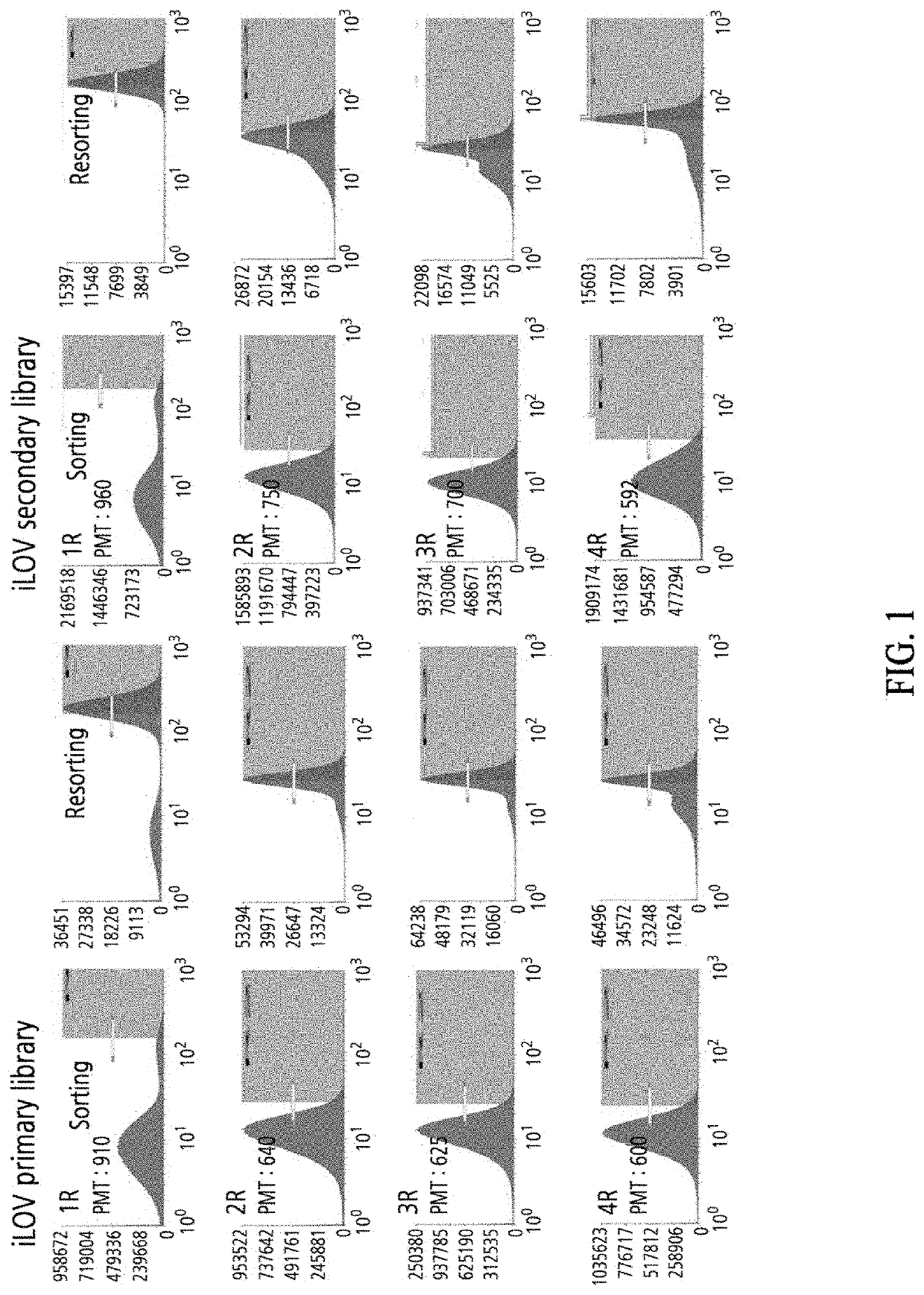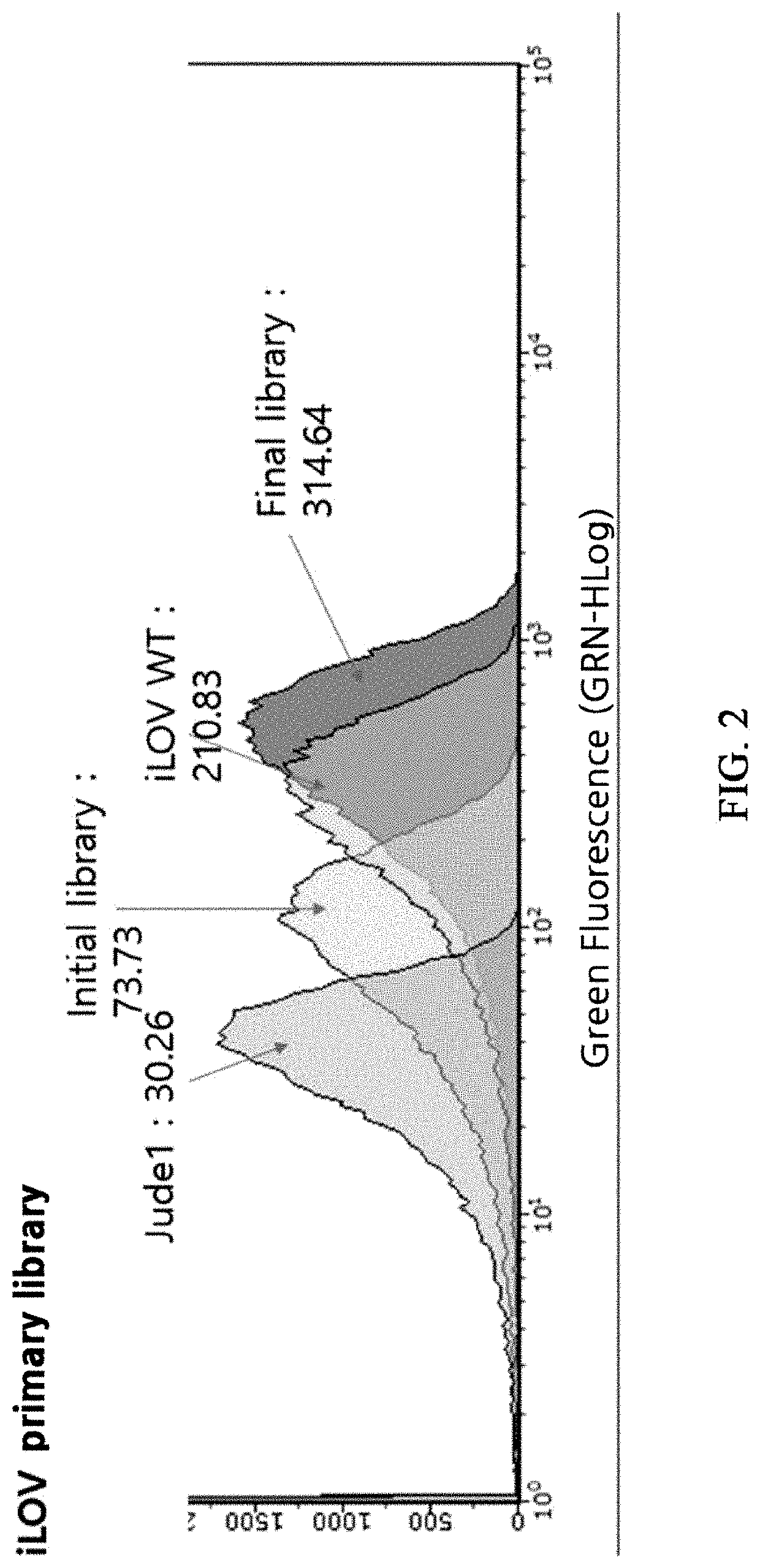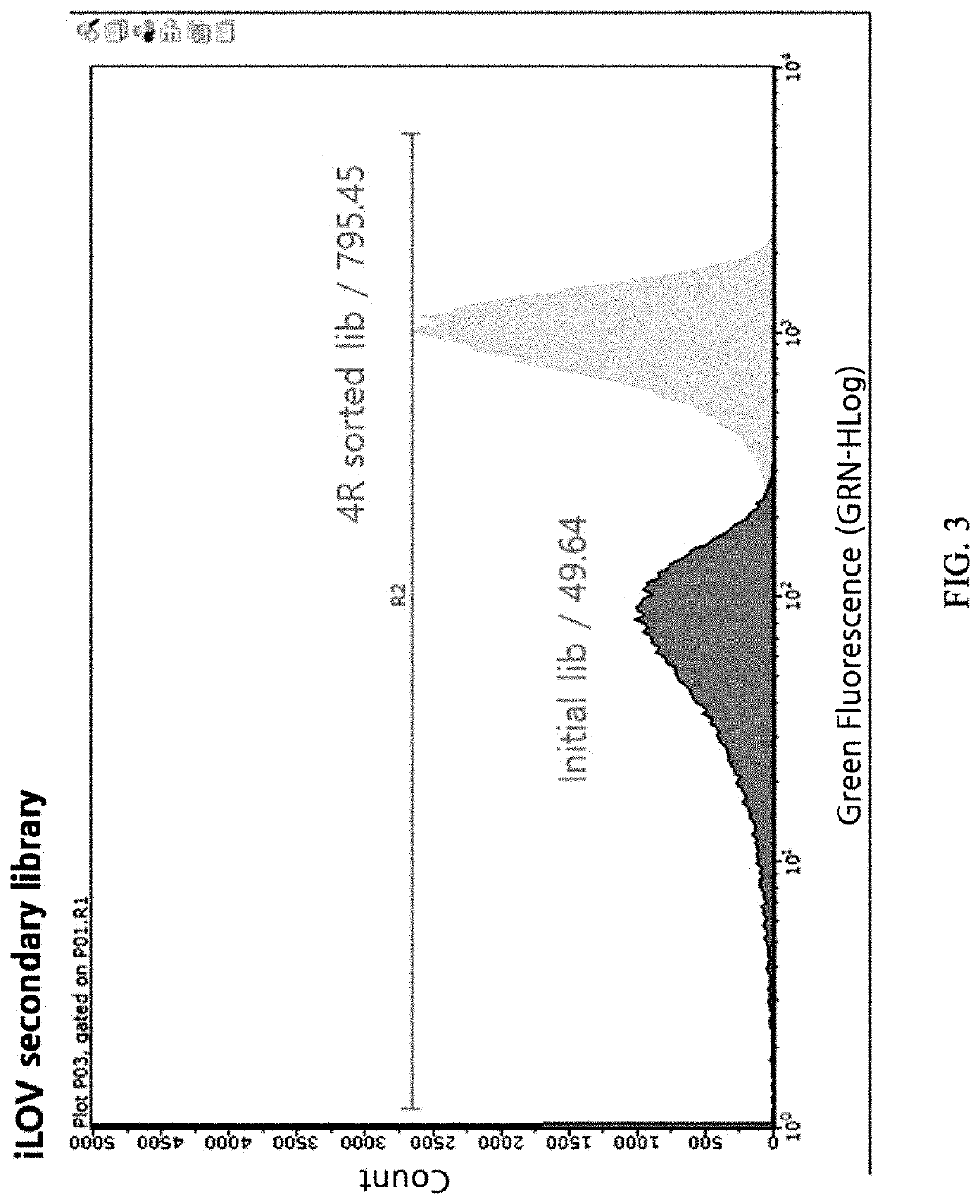Flavin mononucleotide-binding protein variants having improved fluorescence intensity derived from arabidopsis thaliana
- Summary
- Abstract
- Description
- Claims
- Application Information
AI Technical Summary
Benefits of technology
Problems solved by technology
Method used
Image
Examples
examples
Construction of iLOV Variant Libraries
[0070]Arabidopsis thaliana-derived FMN-based fluorescent protein (iLOV) was transferred to PQE-80 vector (Qiagen) using BamHI and HindIII (New England Biolab) restriction enzyme sites to construct a plasmid for iLOV expression. With this plasmid as a template, mutations were introduced using an error-prone PCR technique. Primers for error-prone PCR were as follows: 5′-CATCACCATCACCATCACGGATCC-3′, 5′ -AAGCTTAATTAGCTGAGCTTGGACTCCTG-340 . Library inserts were produced whose error rate was adjusted not to exceed 0.5%. The library inserts were digested with BamHI and HindIII (New England Biolab) restriction enzymes, ligated into the PQE-80L vector digested with the same restriction enzymes, and transformed into Escherichia coli Jude1 ((F′ [Tn10(Tet1) proAB+laclqΔ(lacZ)M15] mcrA Δ(mrr-hsdRMS-mcrBC) f80dlacZΔM15 ΔlacX74 deoR recA1 araD139 Δ(ara leu)7697 galU galKrpsLendA1nupG) to generate a large iLOV variant library. A secondary library was constructe...
PUM
| Property | Measurement | Unit |
|---|---|---|
| Quantum yield | aaaaa | aaaaa |
| Fluorescence | aaaaa | aaaaa |
Abstract
Description
Claims
Application Information
 Login to View More
Login to View More - R&D Engineer
- R&D Manager
- IP Professional
- Industry Leading Data Capabilities
- Powerful AI technology
- Patent DNA Extraction
Browse by: Latest US Patents, China's latest patents, Technical Efficacy Thesaurus, Application Domain, Technology Topic, Popular Technical Reports.
© 2024 PatSnap. All rights reserved.Legal|Privacy policy|Modern Slavery Act Transparency Statement|Sitemap|About US| Contact US: help@patsnap.com










